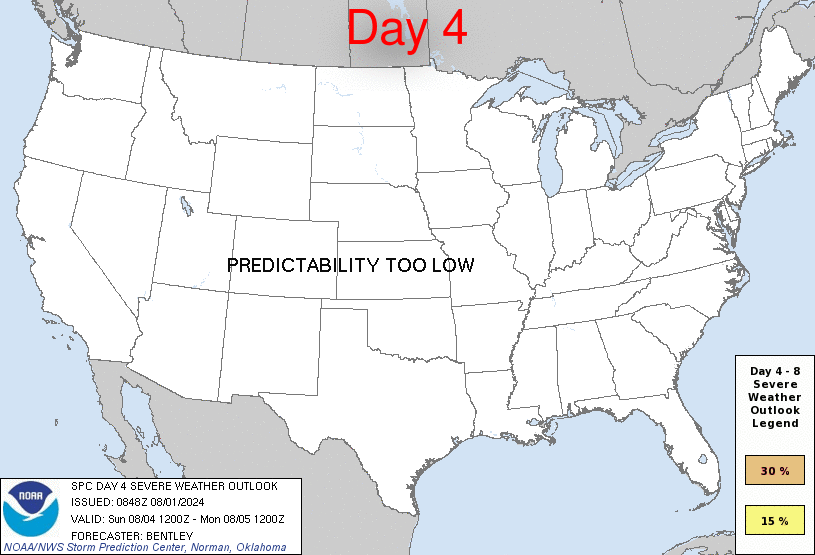A VERY WARM/MOIST BOUNDARY LAYER SHOULD BE IN PLACE BY DAY 4 ACROSS
THE PLAINS...THOUGH STRONG RIDGE -- AND THUS SUBSIDENCE/CAPPING --
SHOULD KEEP THE CONVECTIVE THREAT SUPPRESSED WWD NEAR A HIGH PLAINS
DRYLINE. HOWEVER...WITH FAVORABLE INSTABILITY AND AMPLE SHEAR
ANTICIPATED INVOF THIS BOUNDARY...A MULTIPLE DAY THREAT FOR SEVERE
STORMS IS EVIDENT. WHILE THE GFS CONTINUES TO SUGGEST THAT THE
THREAT WILL BE SOMEWHAT FURTHER E THAN THE ECMWF...BOTH AGREE THAT
THE GREATEST POTENTIAL SHOULD BE FOCUSED SOMEWHERE WITHIN A ROUGHLY
200 MILE-WIDE AREA CENTERED OVER THE HIGH PLAINS. THUS...WILL
MAINTAIN A THREAT AREA OVER PARTS OF THE NRN AND CENTRAL HIGH
PLAINS...AND EXPAND THE AREA SWD THIS FORECAST TO INCLUDE PARTS OF
NM AND W TX.

Southwest NE, West Central KS, West OK, Central TX
The area of concern (above) is looking like they will have a significant severe weather outbreak with the newer data coming in. The main trigger and focus for these storms will be a well defined dry line extending from NE down thru TX. The one thing that catches my eye right away in the model data is the strong instability along and ahead of the dry line. SBCAPE values will range from 2500-3500+j/kg. LI values will shown to be around -8 to -9C in some spots!! The strong LLJ structure will be a contributor to the thermodynamic profile with winds around 45kts. Backing sfc winds throughout the day will enhance low level shear with a southerly wind becoming southeasterly. The negatively tilted trough will increase upper air divergence and diffluence over the threaten areas. But the neg. tilt keeps the winds mostly behind the dry line and a slight shift could impact the forecast very easily. Rigth now it looks like the threaten areas will tap enough winds aloft for supportive vertical shear to sustain super cell development as the omega sig. ridge pushes eastward. Signficant 500mb cold pool aloft will push in mainly towards the northern part of the dry line increasing the lapse rates supporting threat for large hail and damaging wind. continue


